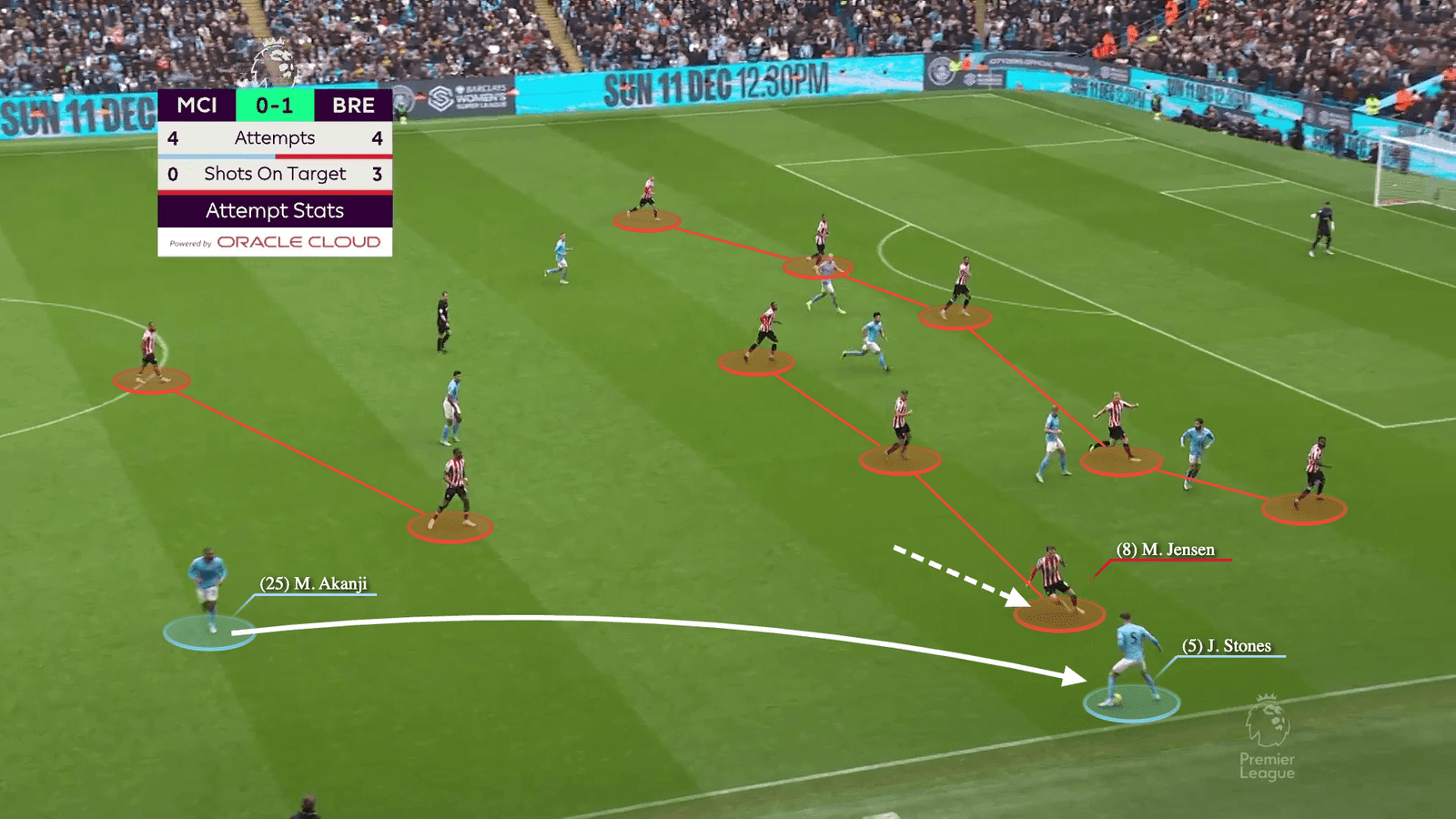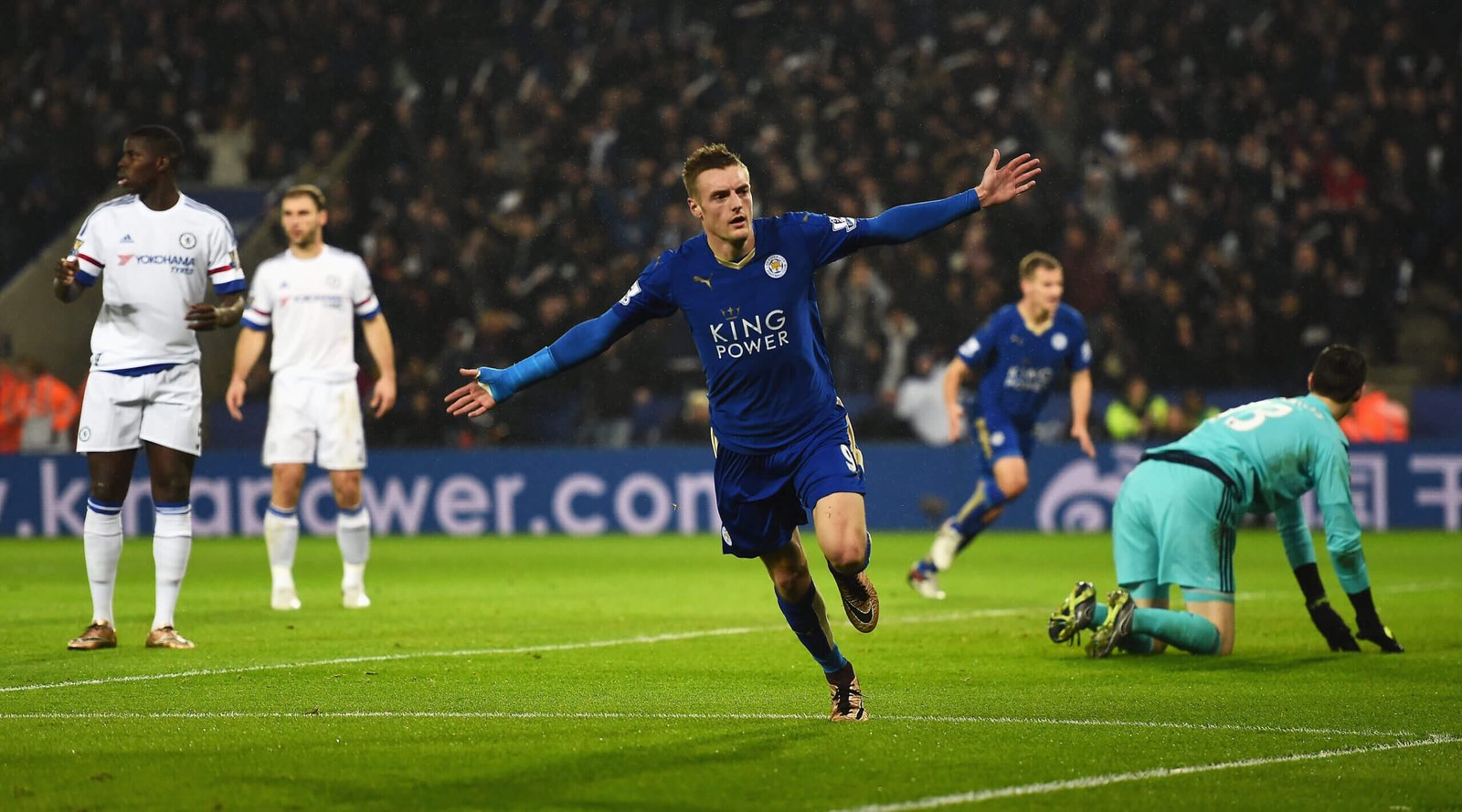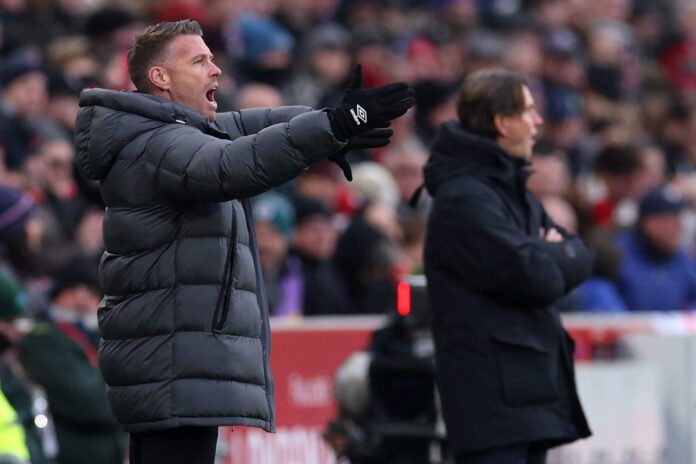Diego Simeone is someone who always expresses exactly how he feels. “You see English football now and the matches finish 4-4, 5-3, 6-2, or 5-1,” said the Atletico Madrid head coach in November. “These are all games that are fun to watch, but nobody is defending!”
Unnecessarily provocative? Yes. Does he have a point? Also yes.
Among Europe’s big five leagues, only the Bundesliga (3.19) is close to matching the Premier League’s goals per game rate (3.20) this season, though the German top-flight is regularly Europe’s highest-scoring major league, owing to the homogeneity of pressing and the high volume of counter-attacks. Last season was the highest-scoring in Premier League’s 20-team era history at 2.85 goals per game but even in that context, this season’s increase is stark.
Simeone’s Atletico have been the most successful defence-first team of recent years. They have come up against five of the Premier League’s ‘Big Six’ in European competition (they are yet to play Tottenham Hotspur), and have eliminated four of them, primarily with an aggressive 4-4-2.
Atletico knocked out Liverpool in 2019-20 and Manchester United in 2021-22, both in the Champions League round of 16. They knocked out Arsenal in the Europa League semi-finals in 2017-18 on their way to lifting the trophy and overcame Chelsea in the Champions League last four in 2013-14.
Guardiola and Simeone shake hands in 2016 (Guenter Schiffmann/AFP via Getty Images)
Manchester City are the only team Simeone has not beaten from England’s elite, but he did beat Pep Guardiola’s Bayern Munich in the Champions League semi-finals (on away goals) in 2015-16 and has never lost to the Spaniard by more than one goal.
Guardiola’s arrival in Manchester in 2016 was a turning point for the Premier League becoming a passing league. City are on track to become the first team to win the league with a pass completion over 90 per cent. In 2009-10, Chelsea and Arsenal, who finished first and third, were the only teams with a rate higher than 80 per cent.
“When we arrived (2013, at Southampton), it was difficult to find two or three teams playing in the same kind of style,” Mauricio Pochettino told Alan Shearer. “Now it’s like all teams try to build from the back, try to press high. It’s like it was contagious. I don’t say this is wrong, but I think it’s too much sometimes. I preferred it in the past when it was different coaches, different ways of playing.”
Charles Reep, a trailblazer of performance analysis in England, published a 1968 paper entitled ‘Skill and Chance in Association Football’. This inspired Charles Hughes, who became FA technical director in 1983 and instilled a playing philosophy of long balls and physical defending, rooted in key findings from Reep’s paper:
- 10 per cent of shots were scored
- Half of goals were scored from zero or one passes
- 80 per cent of goals were scored from fewer than 4 passes
- 50 per cent of goals came from regains in the opposition half

Charles Reep, writing in the April 1962 edition of World Sports magazine (Liam Tharme/The Athletic)
Later, some parts were validated, namely the overall shot conversion rate, while others were recontextualised. Importantly, the high proportion of goals from low passing sequences was just a reflection of more of those sequences occurring. The percentage of longer passing sequences that ended in goals was roughly the same.
Reep and Hughes were not in the nation’s thoughts when the FA launched the ‘England DNA’ initiative in 2014. This was, and is, a coaching and tactical framework for all England teams, “aimed at building possession domination” and wanted to develop future England players with “outstanding technical and tactical abilities”. Dan Ashworth, the FA director of elite development at the time, stressed that it would be remiss not to look at some of the lessons other countries have provided.
Undoubtedly the Dutch total football approach of Rinus Michels and Johan Cruyff were sources of inspiration. The same can be said for Guardiola’s Barcelona and the pass-mastery of 2008-2012 Spain which won them two European Championships and the World Cup. Plenty of coaches and players from those teams are now involved in management themselves.
The upshot? Possession and positional play football has become so common that direct, counter-attacking and defence-first approaches have never been more appropriate. Counter-attacks hit a five-year high in the Premier League last season.
Since 2018-19, 65 per cent of goals have come from sequences of fewer than three passes, and just 9.4 per cent from sequences of 10+ passes. Play style is way more than just goalscoring, often more about control, but there is an increasing elitism around possession and positional play-led coaches, who often come unstuck most against counter-attacking sides.
Take Guardiola’s City. In seven full seasons, a team has done the double over them (beat City home and away) only five times. All five were direct, counter-attacking sides with strong defensive bases, often playing a back-five. Antonio Conte did it twice, with Chelsea in 2016-17 and Spurs in 2021-22, with Chelsea’s 3-1 win at the Etihad in December 2016 remaining one of the greatest counter-attacking Premier League displays of modern times.
Nuno Espirito Santos’ Wolves and Ole Gunnar Solskjaer’s Manchester United — two of the best counter-attacking sides in recent league history — both managed it in 2019-20, while Brentford did it last season, winning 2-1 away and 1-0 at home, albeit on the final day when City were thinking of upcoming finals in the FA Cup and Champions League. Against ‘Big Six’ opponents, Thomas Frank switches from 4-3-3 to 3-5-2 and plays particularly directly.
“Not sometimes, always three! Jamie come on!” 😅
Thomas Frank explains how he changes the Brentford set up when facing the ‘big six’ in the Premier League 👀🔀 pic.twitter.com/jjyU5EEabz
— Sky Sports Premier League (@SkySportsPL) September 18, 2023
“We struggled a lot with their long balls, and they didn’t have many sequences of passes,” said Guardiola after the Brentford defeat at the Etihad in November 2022. “It was direct with (David) Raya the ’keeper playing balls to the striker. (Ivan) Toney flicked the ball on, and we always had problems behind and in front of our defence.”
“When they lost the ball, they were always behind it. That’s why we couldn’t find our rhythm. They defended really well, with three central defenders and three holding midfielders.”

There is no simple way teams can avoid playing against this type of opponent. Against positional play and high possession teams, teams can set traps and press from triggers to try to prevent them from accessing a certain player or funnel play into a specific area.
For instance, Arsenal’s open-play attacking problems this season are rooted in opponents doubling up on their wingers and defending with back fives, an unsurprising approach given Bukayo Saka and Gabriel Martinellini were involved in over 50 per cent of league goals last season.
In 2022-23, Arsenal dropped more points away to bottom-half teams than top-half ones, fittingly handing City the title with a defeat away to Nottingham Forest. Arsenal had 81 per cent possession but failed to register a big chance and Forest won the game with a goal from a counter-attack. Aside from having even more possession, nothing can be done to prevent a team from playing directly — inferior sides that do the best against ‘Big Six’ clubs bring them down to their level, not try to play up, regardless of how ‘brave’ some might think that is.
Roberto De Zerbi’s Brighton & Hove Albion have especially suffered when opponents sit off and refuse to be baited into the press that Brighton want them to start so they can play their central passing patterns through the lines.
Humbling defeats this season to West Ham (3-1), Aston Villa (6-1), Luton Town (4-0), and Everton last season (5-1), followed the same pattern: Brighton concede early, fail to penetrate a stubborn defence, get nowhere with crosses and then get hit on the break, with their overly-expansive shape ripe for counter-attacking.
Tactically, the 3-5-2 makes sense for any low-budget Premier League team. Most big sides play a back four, so a strike partnership in a 3-5-2 leaves a two-v-two against centre-backs. High defensive lines are common, easily exploited through flick-ons and ideal for flying wing-backs to run beyond. Out-of-possession, a 5-3-2 packs bodies centrally, denying space and midfield overloads. Against single No 9 systems — which is most of the league — it allows one centre-back to man-mark without compromising the structure.
Wolves showed how to do it when they beat City 2-1 in September. Left centre-back Toti Gomes man-marked Phil Foden, and Wolves still had Craig Dawson and Maximilian Kilman two-v-one against Erling Haaland. They also filled the right side of their block, closing space where Haaland wanted to make channel runs.

Sheffield United had success under Chris Wilder with an unconventional 3-5-2 in 2019-20. Their overlapping centre-backs caused opponents all sorts of problems, but they also had the second-best defence, and were seventh, when the season was paused due to the pandemic. Nuno’s Wolves, meanwhile, achieved consecutive seventh-placed finishes after promotion and reached the Europa League quarter-finals while adopting that formation.
Luton, who climbed out of the relegation zone last week for the first time since November, are further proof. They were heavy favourites to go straight back down, but Rob Edwards has mixed between a 3-4-2-1 and 3-5-2 and balanced high pressing with a low block. At home, they have faced seven of the current top eight, and their overall record is competitive: three wins, two draws and five losses, all by a single goal.
Luton have attempted the most crosses in the league and their aggressive pressing caused Brighton to self-destruct last week. As their 4-4 draw at Newcastle demonstrated, they have the best survival chances of the promoted trio, with Burnley and Sheffield United increasingly adrift in 19th and 20th.
Burnley are a fascinating case study. They survived five Premier League seasons, with two top-half finishes and a record seventh-place in 2017-18, which earned them European football. Then they stagnated, as others around them evolved, and sacked Sean Dyche before they slipped into the Championship. Under Vincent Kompany, Guardiola’s former City captain, they have been much more expansive, high-pressing and ball-dominant. That style won them the Championship — the first team to do so with 100+ points since Leicester City in 2013-14 — but 11 of their 16 league losses this season have been by two or more goals.
The lack of an endgame with this approach seems to dissuade head coaches and clubs. Leicester’s 2015-16 Premier League title was largely a victory for counter-attacking football but remains the exception to the rule. As romantic as it was, they benefited from the ‘Big Six’ having poor seasons — Leicester’s 81 points is the sixth-fewest by a title winner, with the average since 2016-17 being 94 points.

Leicester’s counter-attacking style was key to them winning the Premier League in 2016 (Laurence Griffiths/Getty Images)
Simeone’s Atletico have twice won La Liga (2013-14 and 2020-21), though he is the only recent head coach to have such longevity, in charge since December 2011, while playing this way. It speaks volumes that for all his success — multiple league titles and cups, both domestic and European — neither of Spain’s biggest two clubs nor a Premier League side have poached him.
Nuno was sacked from Wolves after finishing 13th in 2020-21, after 199 games, and only managed 17 at Spurs. For better or worse, Europe’s most elite want to win while dominating the ball.
Direct football isn’t the way teams win titles, and it undoubtedly has a shorter shelf life than ball-dominant styles. But given how wide the gap between the Premier League and Championship is, investing in a strong defence and embracing direct/counter-attacking play makes increasingly good sense, even if it is akin to Brentford’s hybrid model, where they specifically employ the tactic against the top teams.
Without going full Charles Reep, being open-minded and innovative sometimes means doing something the old-fashioned way.
(Top photo: Adrian Dennis/AFP via Getty Images)
Read the full article here


